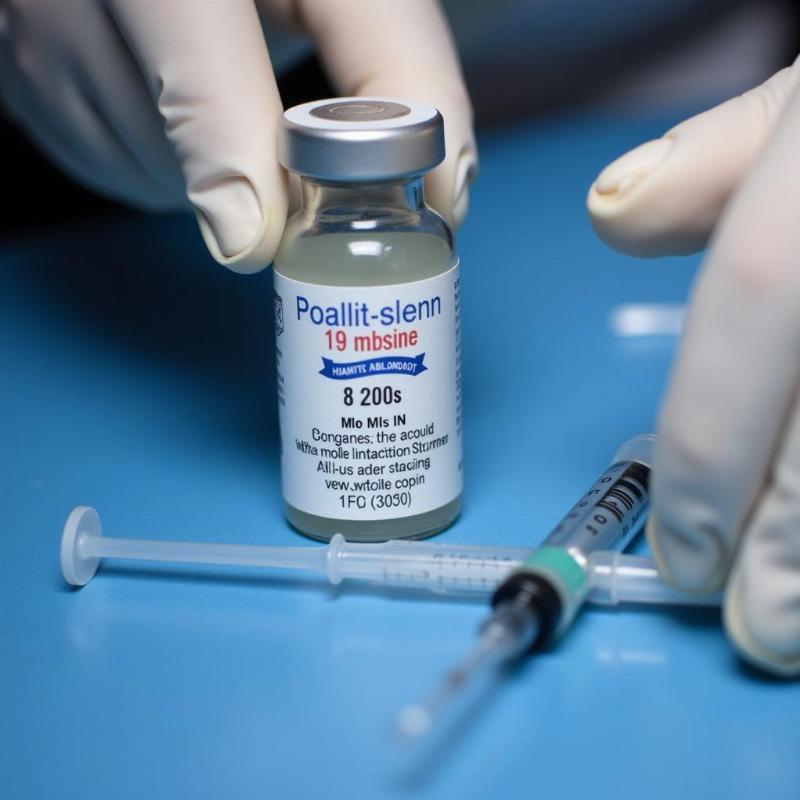The 10-way shot for dogs, often referred to as the DHPP or DA2PPv vaccine, is a crucial part of canine healthcare in the United States. This vital vaccine protects our furry friends against a combination of highly contagious and potentially fatal diseases. Understanding this vaccine and ensuring your dog receives it is a cornerstone of responsible pet ownership. This article will explore the importance of the 10-way shot, the diseases it prevents, potential side effects, and answer common questions.
Understanding the 10-Way Shot for Dogs
The 10-way shot is a core vaccine, meaning it’s highly recommended for all dogs regardless of lifestyle or breed. This powerful vaccine protects against distemper, hepatitis, parainfluenza, parvovirus, and two strains of leptospirosis, as well as coronavirus, adenovirus type 2, and bordetella. These diseases can cause severe illness and even death in unvaccinated dogs. Vaccinating your dog contributes to overall canine health within your community.
 10 Way Shot Vaccine Vial Closeup
10 Way Shot Vaccine Vial Closeup
Diseases Prevented by the 10-Way Shot
The 10-way shot provides comprehensive protection against a range of serious canine illnesses: distemper (a severe viral disease affecting the respiratory, gastrointestinal, and nervous systems), infectious canine hepatitis (a viral infection affecting the liver), canine parainfluenza (a highly contagious respiratory infection), parvovirus (a life-threatening viral disease primarily affecting puppies), and leptospirosis (a bacterial infection transmitted through contaminated water or urine). Additionally, it covers coronavirus, adenovirus type 2, and bordetella, all of which can cause respiratory distress. These diseases are highly prevalent in the United States, highlighting the essential nature of the 10-way shot.
Administering the 10-Way Shot: What to Expect
The 10-way shot is typically administered to puppies in a series of injections starting around 6-8 weeks of age, followed by boosters every 3-4 weeks until they are around 16 weeks old. Adult dogs who have not been previously vaccinated also require an initial series and boosters. Consult your veterinarian can vaccinated dogs get rabies for a tailored vaccination schedule based on your dog’s age, health history, and local disease prevalence. The vaccine is injected subcutaneously, usually in the scruff of the neck or the flank.
Potential Side Effects of the 10-Way Shot
While generally safe, the 10-way shot, like any vaccine, can occasionally cause mild side effects. These may include soreness at the injection site, lethargy, decreased appetite, or a mild fever. These symptoms typically resolve within a day or two. In rare cases, more serious allergic reactions can occur. Contact your veterinarian immediately if you notice any signs of an allergic reaction, such as facial swelling, difficulty breathing, or hives. canine spectra 10 dog vaccine
Ensuring Optimal Protection: Booster Shots and Veterinary Consultations
Maintaining your dog’s immunity against these diseases requires booster shots, typically administered annually or as recommended by your veterinarian. Regular veterinary checkups are essential for assessing your dog’s overall health and ensuring they are up to date on their vaccinations. Remember, consistent vaccination is not only crucial for your dog’s well-being but also contributes to herd immunity, protecting other dogs in the community.
Conclusion: Prioritizing Your Dog’s Health with the 10-Way Shot
The 10-way shot is a vital safeguard for your dog’s health. By protecting against a spectrum of serious diseases, this vaccine significantly contributes to a longer, healthier, and happier life for your canine companion. Discuss your dog’s vaccination needs with your veterinarian to ensure they receive the appropriate protection. vaccine for snake bites in dogs
FAQs
- What is the 10-way shot for dogs? The 10-way shot is a core vaccine that protects dogs from multiple diseases including distemper, hepatitis, parainfluenza, parvovirus, and leptospirosis.
- When should my dog receive the 10-way shot? Puppies typically begin the vaccination series around 6-8 weeks of age, followed by boosters. Consult your vet.
- Are there any side effects? Mild side effects like soreness at the injection site or lethargy are possible but usually resolve quickly.
- How often does my dog need a booster? Typically annually, but consult your veterinarian for personalized recommendations. 10 in 1 dog vaccine
- Why is the 10-way shot important? It protects against serious and potentially fatal diseases common in the U.S.
- Is the 10-way shot expensive? Costs vary, but the investment pales in comparison to the potential cost of treating these diseases.
- Where can I get my dog vaccinated? Your local veterinarian can administer the 10-way shot.
Beautdogs.us is your premier source for comprehensive dog care information, breed insights, and product recommendations. Whether you’re a new dog owner or a seasoned expert, Beautdogs.us offers expert guidance to ensure your canine companion receives the best possible care. For personalized advice, contact us via email at [email protected] or phone at +1 501-555-7529. Beautdogs.us is dedicated to helping you navigate the world of dog ownership with confidence.